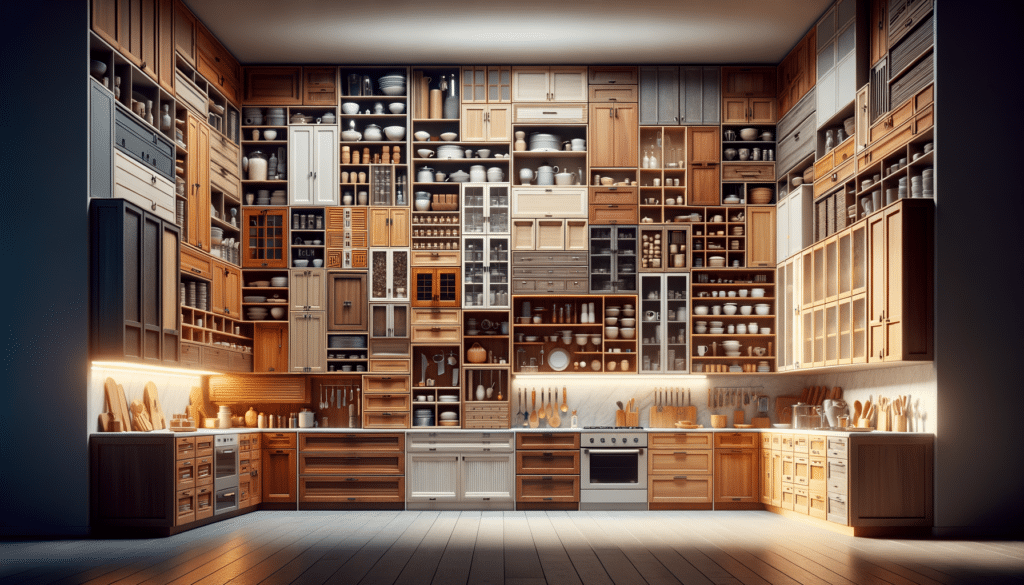The Evolution of Kitchen Cabinets
Kitchen cabinets have come a long way since their inception. Originally, kitchens were simple spaces with open shelves or pantries. The concept of closed cabinetry emerged as a response to the need for more organized and hygienic storage solutions. Over the decades, kitchen cabinets have evolved in design, materials, and functionality.
In the early 20th century, kitchen cabinets began to incorporate more advanced materials such as metal and laminate, allowing for easier cleaning and maintenance. The mid-20th century saw the rise of modular kitchen cabinets, which offered homeowners the flexibility to customize their kitchen layouts according to their needs.
Today, kitchen cabinets are not just about storage. They play a crucial role in defining the aesthetic appeal of a kitchen. With advancements in technology, cabinets now feature soft-close hinges, pull-out shelves, and integrated lighting. The evolution of kitchen cabinets reflects the changing lifestyles and preferences of homeowners, making them a vital component in modern kitchen design.
Materials and Finishes: A World of Choices
The choice of materials and finishes for kitchen cabinets can significantly impact the overall look and feel of a kitchen. Wood remains a popular choice due to its timeless appeal and versatility. However, other materials like stainless steel, glass, and engineered wood have gained popularity for their durability and contemporary aesthetic.
When selecting materials, it’s essential to consider factors such as budget, maintenance, and kitchen style. For instance, solid wood cabinets are known for their exceptional quality and natural beauty, but they may require more upkeep compared to laminate or thermofoil options.
Finishes also play a crucial role in the appearance of kitchen cabinets. Whether you prefer a glossy, matte, or distressed finish, each option offers a unique character to the space. The choice of color can also influence the kitchen’s ambiance, with lighter hues creating an airy feel and darker shades adding depth and sophistication.
Design Styles: From Traditional to Contemporary
Kitchen cabinets come in a myriad of design styles, each catering to different tastes and preferences. Traditional cabinets often feature ornate details, raised panel doors, and rich wood tones, evoking a sense of warmth and elegance.
On the other hand, contemporary cabinets are characterized by sleek lines, minimalistic designs, and high-gloss finishes. These cabinets often incorporate modern materials like glass and metal, offering a clean and streamlined look.
Transitional cabinets blend elements from both traditional and contemporary styles, providing a balanced and versatile aesthetic. This design approach allows homeowners to mix and match different materials and finishes, creating a personalized kitchen space that suits their lifestyle.
Functionality and Innovation in Modern Cabinets
Functionality is at the heart of modern kitchen cabinet design. With the ever-increasing demands of busy lifestyles, cabinets are now equipped with innovative features that enhance usability and efficiency.
Soft-close hinges, pull-out drawers, and corner carousels are just a few examples of features that improve accessibility and storage capacity. Integrated lighting solutions provide better visibility, making it easier to locate items within the cabinets.
Moreover, the rise of smart technology has led to the development of intelligent cabinets that can be controlled via smartphone apps. These cabinets offer convenience and customization, allowing homeowners to optimize their kitchen space according to their needs.
Choosing the Right Cabinets for Your Kitchen
Selecting the right kitchen cabinets involves careful consideration of various factors, including budget, style, and functionality. It’s essential to assess your storage needs and the overall layout of your kitchen before making a decision.
Consider consulting with a kitchen designer to explore different options and find a solution that complements your home’s architecture and interior design. Don’t forget to factor in the quality and durability of the materials, as well as the ease of maintenance.
Ultimately, the right kitchen cabinets should not only enhance the aesthetic appeal of your kitchen but also provide practical solutions for your everyday needs. By investing in quality cabinets, you can create a kitchen space that is both beautiful and functional.
